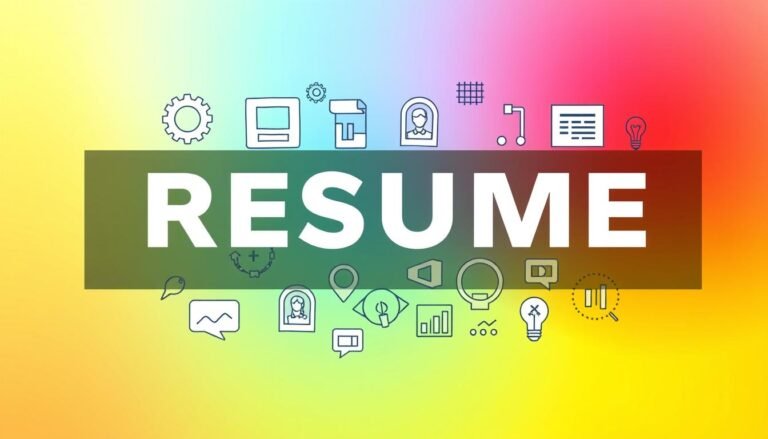Develop a Workplace Skills Plan for Success
Are you ready to change how your organization grows? A well-made workplace skills plan could be just what you need. It guides your company’s growth and helps your team reach new levels of productivity and innovation.
In today’s fast-changing business world, staying ahead means always improving your team’s skills. A strong workplace skills plan acts as your guide. It helps you manage employee training and professional growth. It’s not just about keeping up; it’s about leading in your field.
Let’s explore workplace skills planning and see how it can change your organization. It can boost productivity and make employees happier. Are you ready to help your team reach its full potential?
Key Takeaways
- Workplace skills plans boost productivity and employee satisfaction
- A well-implemented plan can lead to a 30% reduction in compliance-related fines
- 80% of employers see increased productivity after implementing a skills plan
- 75% of companies report improved innovation with a well-trained workforce
- 49% of HR professionals prioritize employee skills development
- Effective plans include skills assessments, targeted training, and continuous evaluation
Understanding the Workplace Skills Plan (WSP)
A Workplace Skills Plan (WSP) is key for managing talent. It’s a plan that shows how companies will improve their employees’ skills for a year. It matches with national goals.
Definition and Purpose of a WSP
The WSP acts as a guide for filling skill gaps and making training relevant. In South Africa, companies with over R500,001 in payroll or more than 50 employees must pay a 1% Skills Development Levy.
Benefits for Employers and Employees
Employers gain from a good WSP through better training and safety. This leads to fewer accidents, lower costs, and happier workers. Employees get career growth and job security.
Aligning WSP with Organizational Objectives
The WSP must match a company’s goals. This makes sure training helps with business aims, industry needs, and future skills. It’s key for improving the Skills Development Element of the BBBEE Scorecard.
| WSP Component | Impact |
|---|---|
| Skills Assessment | Identifies gaps in workforce capabilities |
| Training Programs | Addresses identified skill gaps |
| Safety Training | Reduces workplace accidents and injuries |
| Performance Indicators | Measures effectiveness of training initiatives |
The deadline for submitting WSP is at the end of April each year. Not submitting on time means you can’t claim the Mandatory Grant from the Skills Development Levy.
Key Components of an Effective Workplace Skills Plan
A well-made Workplace Skills Plan (WSP) is key for companies wanting to keep learning. It has important parts that help employees grow and make the company successful.
Skills Audit and Assessment
Starting with a thorough skills audit is crucial. This step uses tools to check what skills the workers have now. It shows that 54% of employees need big skill updates to stay on top in their jobs.
Training and Development Programs
After finding the skills gaps, companies create special training. These programs fill the gaps and match with the company’s goals. Amazingly, 90% of workers say they wouldn’t leave their job for better skill chances.
Implementation Strategy
A strong plan for putting the WSP into action sets clear goals, times, and who does what. It makes sure the WSP works well at every level. This builds a culture of always learning and growing.
Monitoring and Evaluation Methods
Checking and reviewing how the WSP is doing is key. These steps help see how training works and improve the plan over time.
| Component | Purpose | Impact |
|---|---|---|
| Skills Audit | Assess current capabilities | Identifies skill gaps |
| Training Programs | Address skill gaps | Improves employee competencies |
| Implementation Strategy | Execute WSP effectively | Ensures organized skill development |
| Monitoring Methods | Track progress | Enables continuous improvement |
Creating a Comprehensive Skills Assessment
A thorough skills assessment is key for managing performance and mapping employee skills. It helps spot skill gaps by using a structured process. Digital platforms make assessments easier and faster.
Skills assessments use self-surveys, performance reviews, and feedback from peers. These methods give important info on skills of individuals and teams. Putting this info into matrices shows trends and where to improve.
Data visualization tools are crucial for showing which skills are in demand and where to get better. This info lets companies make training programs that meet employee needs. It also helps in creating learning paths for each employee.
“87% of companies globally are currently experiencing a skills gap or expect one soon.” – McKinsey and Company
AI-powered learning systems, like Lingio, help training managers make learning paths that fit each employee. These systems offer learning that’s easy to scale and reach. They change how skills are checked and grown in big companies.
| Assessment Method | Benefits |
|---|---|
| Self-assessment surveys | Employee insight, personal reflection |
| Performance reviews | Objective evaluation, goal alignment |
| Peer feedback | Collaborative perspective, team dynamics |
| Direct observation | Real-time assessment, practical skills evaluation |
When doing skills assessments, it’s vital to follow the law and ethical rules. This makes sure they’re fair and don’t discriminate. Getting feedback from everyone involved helps make the assessment better and fairer.
Designing Targeted Training and Development Initiatives
Creating effective professional development initiatives is key to success. Only 51% of employees find training useful, showing a need for better programs. Yet, 96% of workers want to learn new skills, offering a chance for companies to improve their training.
Identifying Skill Gaps and Prioritizing Needs
To make training impactful, start by finding skill gaps. Focus on skills like leadership, critical thinking, and problem-solving. Gartner says 59% of HR leaders focus on these skills. Create a model to see where training is needed and match it with business goals.
Selecting Appropriate Training Methods
Pick training methods that fit your team. E-learning platforms are flexible and easy to use. Consider these options:
- Daily dilemma scenarios
- Communication skill simulations
- Problem-solving games
- Product tutorials
- Case studies
Incorporating Emerging Technologies and Micro-credentials
Use Learning Management Systems (LMS) or Learning Experience Platforms (LXP) for training. These tools improve user experience and learning results. Micro-credentials offer quick skill development, letting employees learn specific skills fast.
Tailoring Programs for Diverse Employee Groups
Make learning paths personal for different roles and levels. For managers and leaders, consider:
- Leadership mentoring
- Executive coaching
- Job shadowing
- Professional development courses
- Self-paced micro-learning
By using these strategies, companies can fill skill gaps and keep employees. Remember, 94% of workers are more likely to stay if their development is invested in. Good training helps employees and can add $6.5 trillion to global GDP.
Implementing and Monitoring Your Workplace Skills Plan
Putting your Workplace Skills Plan (WSP) into action is crucial for its success. A clear timeline helps everyone know what and when. It’s important to track how well your plan is doing.
Learning analytics and skill development tracking are key for measuring progress. They show if your training is effective. For instance, 86% of companies check how well training works, showing its importance.
Look at how training impacts your business. Is performance better? Are new skills used on the job? Regular check-ins help adjust your plan. This keeps your WSP relevant for your company and industry.
Your WSP isn’t fixed. It should evolve with your business. Using training effectiveness metrics helps you focus on what’s important. This ensures your WSP remains a valuable tool for growth and success.
Source Links
- What ıs A Workplace Skills Plan? | Sertifier
- Workplace Skills Plan: Are You Preparing Your Workforce?
- A 4-Step Employee Skills Development Plan | Bridge Skills Plus
- Understanding South Africa’s Workplace Skills Plan (WSP)
- What is a Workplace Skills Plan and Why Do You Need One For A Safer Workplace? – SafetyCloud
- Designing a Successful Skill Strategy for the Future Workplace
- The 7 Key Elements of Effective Skills Building – A Comprehensive Guide by LearningTribe
- Your guide to employee skills assessments in 2024
- How to Conduct a Skills Assessment for Your Organization – ExpertusONE
- 7 Steps To Creating A Professional Skills Development Plan
- Skill Building in the Workplace: An HR’s Guide
- Report on the Monitoring of Workplace Skills Plan Implementation
- Want to learn more about what the Workplace Skills Plan (WSP) wsp entails and how to address employee training and development needs within organisations? BOTI offers business training programmes across South Africa. Book now!







